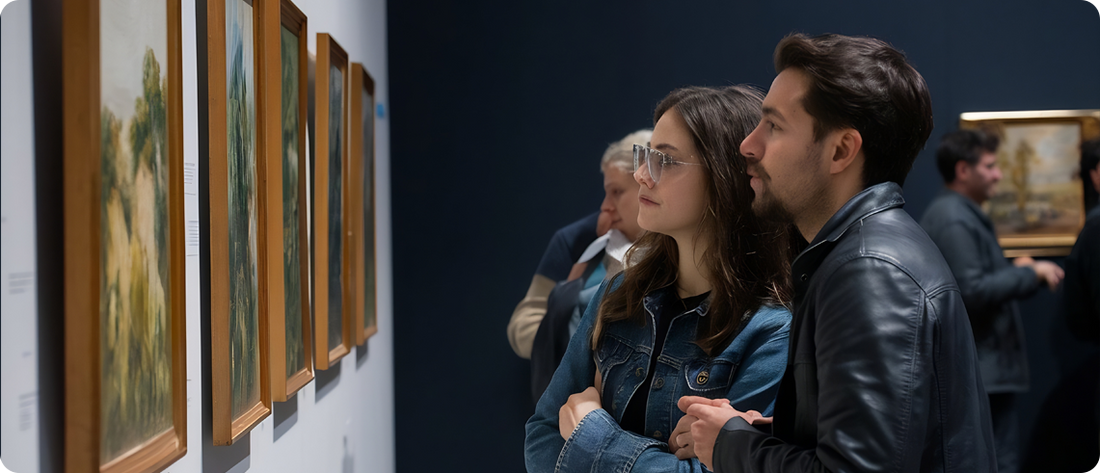
How to Start Your Art Collection: A Beginner’s Guide to Buying Art You Love
Share
Starting an art collection can be a thrilling journey, a way to express your personal taste, and even an investment in future value. Whether you’re buying for your home or planning to build a meaningful collection, here are some key steps to get you started.
1. Find Your Style
Art is deeply personal, so it’s essential to begin by discovering what truly resonates with you. Spend time visiting galleries, art fairs, and exhibitions to get a sense of what styles, mediums, and themes you’re drawn to. Whether you prefer contemporary paintings, abstract sculptures, or photography, take note of recurring styles that captivate you.
Pro tip: Keep a journal or take photos of pieces that stand out to you, noting your emotional response or specific elements that you love.
2. Do Your Research
Once you identify styles you’re interested in, dive a bit deeper. Research artists within that style, learn about the art market, and read up on art history. Familiarizing yourself with different art movements and understanding what drives trends will help you make informed decisions.
Consider learning about:
- How the art market works
- The history and evolution of your favorite styles
- Major artists and influential works in those styles
3. Set a Budget
Knowing your budget upfront can guide your choices and help you approach collecting with realistic expectations. You don’t have to break the bank; art is available at every price point. Many emerging artists offer incredible works at more accessible prices, and galleries often feature a range of options.
Tip: Think about whether you’re open to financing options if a gallery offers them, and consider reserving part of your budget for framing or installation.
4. Explore Different Buying Channels
Art can be purchased through galleries, auctions, online marketplaces, or directly from artists. Each of these has its pros and cons:
- Galleries: Offer guidance, quality assurance, and curated selections.
- Auctions: May allow you to discover rare pieces or score a great price but can be competitive.
- Online Platforms: Sites like Artsy, Saatchi Art, or independent artist websites make art accessible from anywhere in the world.
- Direct from Artists: Buying directly from artists supports them directly and allows for a personal connection.
5. Ask Questions and Seek Guidance
When you find a piece you’re interested in, don’t hesitate to ask questions! Whether buying from a gallery or directly from an artist, understanding the work’s background, materials used, and the artist’s journey can make your acquisition more meaningful. Curators, gallerists, and even other collectors can be invaluable sources of advice.
Questions to ask:
- How did the artist create this piece?
- What themes or messages are explored?
- What is the artist’s background or career trajectory?
6. Trust Your Instincts and Buy What You Love
While art can be an investment, the best collections are built with passion and authenticity. Choose works that you connect with emotionally and want to live with. Art collecting is as much about enjoying the process as it is about the final collection.
7. Consider Your Collection’s Future
Over time, you may want to refine or expand your collection. Many collectors enjoy focusing on a theme or developing a cohesive body of work. Thinking about long-term goals can add depth and direction to your collection and make it even more satisfying.
Future options:
- Periodically rotate pieces on display at home to keep your collection fresh.
- Document your pieces, noting purchase details and artist information.
- Stay updated on your artists’ new work to build a narrative over time.
Final Thoughts
Building an art collection is a lifelong journey that reflects your personal story and evolving tastes. Start slowly, trust your instincts, and enjoy each new acquisition as it becomes part of your collection. With a thoughtful approach, you’ll find that collecting art is not only rewarding but an enduring source of inspiration and joy.
